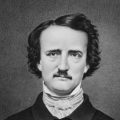Imagism remains one of the most influential forms of poetry in the Western world. The focus on the actual image, rather than losing oneself in fanciful language, was a revelation to many early 20th century poets. It is one of the reasons that free verse is the most prevalent poetic form used today, as the imagists were some of the first to advocate for its use.
Clearly, I’m a big advocate of imagist poetry. In fact, I have multiple copies of the same Imagist anthologies squirrelled away in bookshelves, the bottoms of drawers, my parents’ attic and resting on my partner’s fireplace.
Today, I’ve put together a fairly simple, but comprehensive guide, to help you get started with imagist poetry.
Contents
- 1 What Is Imagism?
- 1.1 What Are The Three Rules of Imagist Poetry?
- 1.2 What are the characteristics of imagism?
- 1.3 Is imagism a poetic form?
- 1.4 What is unusual about Imagism?
- 1.5 What is a imagism in literature?
- 1.6 Are There Any Rules to Imagist Poetry?
- 1.7 Why is Imagist poetry important?
- 1.8 When was Imagism invented?
- 1.9 Is imagery a figure of speech?
- 2 What is Imagist art?
- 3 What influenced Imagism?
- 4 Who are some Imagist Poets?
- 5 What Are Some Examples Of Imagist Poetry?
- 6 What is the goal of Imagism as a literary movement?
- 7 What are some characteristics of Imagism?
- 8 What is the difference between Imagism and symbolism?
- 9 How Do I Write Imagist Poetry?
- 10 What are the steps to analyzing a poem?
What Is Imagism?
Imagism is a movement in early 20th-century Anglo-American poetry that favored precision of imagery and clear, sharp language. The style arose from a meeting of young poets in 1912 at the London home of the American poet Ezra Pound (1885–1972). There, these poets – who included Amy Lowell (1874–1925), H.D. (1886–1961), and D.H. Lawrence (1885–1930) – discussed the poetic principles set forth in a manifesto written by Pound and British poet T.E. Hulme (1883–1917).
These Imagist poets believed that poetry should be focused on images, rather than on narrative or emotion. They also believed that poems should be written in a clear, concise style that makes use of “the exact word,” rather than using vague or flowery language. The goal was to create poems that were “hard and clear as a flint.”
The Imagists were influenced by a number of different poetic traditions, including Japanese haiku, which they felt captured the essence of an image in just a few words. They were also influenced by the French Symbolist poets, who believed that a poem should evoke an emotion or idea through the use of suggestive imagery.
The Imagists were among the first poets to embrace free verse, which is a form of poetry that does not use regular rhythms or rhyme schemes. Instead, it relies on the natural rhythm of speech. This style of poetry was well-suited to the Imagist goal of creating poems that were focused on images and ideas, rather than on sound or form.
What Are The Three Rules of Imagist Poetry?
The three main principles of an imagist poem are:
- Direct treatment of the “thing”, whether subjective or objective.
- To use absolutely no word that does not contribute to the presentation.
- As regarding rhythm to compose in sequence of the musical phrase not in sequence of the metronome.
These three principles were agreed upon by the initial founders of the Imagist poetry movement in the 20th century, including William Carlos Williams, Amy Lowell, Ezra Pound and others.
What are the characteristics of imagism?
The Imagists believed that poetry should be focused on images, rather than on narrative or emotion. They also believed that poems should be written in a clear, concise style that makes use of “the exact word,” rather than using vague or flowery language. The goal was to create poems that were “hard and clear as a flint.”
The Imagists were among the first poets to embrace free verse, which is a form of poetry that does not use regular rhythms or rhyme schemes. Instead, it relies on the natural rhythm of speech. This style of poetry was well-suited to the Imagist goal of creating poems that were focused on images and ideas, rather than on sound or form.
Is imagism a poetic form?
Imagism is not actually a poetic form, but rather a style or approach to writing poetry. The Imagists believed that poetry should be focused on images, rather than on narrative or emotion. They also believed that poems should be written in a clear, concise style that makes use of “the exact word,” rather than using vague or flowery language. The goal was to create poems that were “hard and clear as a flint.”
The Imagists were among the first poets to embrace free verse, which is a form of poetry that does not use regular rhythms or rhyme schemes. Instead, it relies on the natural rhythm of speech. This style of poetry was well-suited to the Imagist goal of creating poems that were focused on images and ideas, rather than on sound or form.
What is unusual about Imagism?
One of the things that is unusual about Imagism is that it was among the first poetic movements to embrace free verse. Free verse is a form of poetry that does not use regular rhythms or rhyme schemes. Instead, it relies on the natural rhythm of speech. This style of poetry was well-suited to the Imagist goal of creating poems that were focused on images and ideas, rather than on sound or form.
Another thing that is unusual about Imagism is that it was a relatively short-lived movement. It arose in the early 20th century and had faded from prominence by the 1920s. Nevertheless, the influence of Imagism can still be seen in modern poetry, particularly in the work of poets who favor a clear, concise style and who focus on images and ideas rather than on sound or form.
What is a imagism in literature?
Imagism is a style or approach to writing poetry that emphasizes the use of images, rather than narrative or emotion. The Imagists believed that poems should be written in a clear, concise style that makes use of “the exact word,” rather than using vague or flowery language.
The Imagists were among the first popular poets to embrace free verse, which is the current prevalent form of poetry, and does not use regular rhythms or rhyme schemes. Instead, it relies on the natural rhythm of speech.
Are There Any Rules to Imagist Poetry?
There are no concrete rules to Imagist poetry, but there are three guidelines that many Imagist poets attempted to follow. These include the use of clear, concise language; the focus on images rather than on narrative or emotion; and the embrace of free verse.
Of course, not all Imagist poets followed these guidelines strictly, and there was considerable variation among the poems that were written under the Imagist banner. Nevertheless, these general principles provide a useful starting point for understanding what Imagism is and how it influenced modern poetry.
Why is Imagist poetry important?
Imagist poetry is important because it was a major force in the development of modern poetry. The Imagists were among the first popular poets to embrace free verse, which is the current prevalent form of poetry, and they also championed the use of clear, concise language. Their focus on images rather than on narrative or emotion had a profound influence on subsequent generations of poets. Even though Imagism was a relatively short-lived movement, its impact can still be felt in modern poetry.
When was Imagism invented?
The Imagist movement began in the early 20th century, although there is some dispute about the exact date. Some scholars believe that Imagism was officially founded in 1912, when a group of poets, including Ezra Pound and Hilda Doolittle (also known as HD), published a manifesto outlining their approach to poetry. Others believe that Imagism began somewhat earlier, around 1910, with the publication of Pound’s poem “In a Station of the Metro.”
Whatever the exact date of its inception, it is clear that Imagism was a major force in the development of modern poetry, and its influence can still be felt in the work of contemporary poets.
Is imagery a figure of speech?
Imagery is not technically a figure of speech, because it is not used to create an effect or to make a point. Instead, imagery is simply the use of vivid, descriptive language to create mental images. However, some figures of speech, such as metaphors and similes, often make use of imagery in order to create their effects.
For example, a metaphor is a figure of speech in which one thing is described as if it were another thing. A simile is a figure of speech in which one thing is described as being like another thing. Both of these figures of speech make use of images in order to create their effects.
Imagism, as a poetic movement, is primarily concerned with the use of images in poetry. However, many of the Imagist poets also made use of figures of speech, such as metaphors and similes, in their work.
What is Imagist art?
Imagist art is a type of art that focuses on the use of images, rather than on narrative or emotion. The Imagists believed that art should be about the “thing itself,” and not about the emotions or ideas that it evokes.
This approach to art was in line with the Imagist goal of creating poetry that was focused on images and ideas. However, not all Imagists were artists, and not all Imagist artists were poets. Some of the most famous Imagist artists include Pablo Picasso and Georges Braque.
Imagist art isn’t necessarily the same as imagist literature – however, there are some similarities between the two forms, beyond the shared name.
What influenced Imagism?
There were several factors that influenced the Imagist movement. One of the most important was the work of the French poet Paul Valéry, who championed the use of images in poetry. Valéry’s work had a significant impact on Ezra Pound, one of the founders of Imagism.
Another important influence was Japanese art and poetry. The Imagists were interested in the way that Japanese poets used images, and they sought to emulate this approach in their own work.
The rise of modernism was also a major factor in the development of Imagism. Modernism was a literary and artistic movement that emphasized progress and change, and the Imagists were strongly influenced by this philosophy.
It’s also worth noting that the First World War had a major impact on the Imagist movement. The war led to a feeling of disillusionment among many artists and writers, and the Imagists were responding to this mood with their focus on images, ideas and a rejection of what was previously considered the norm for art.
Who are some Imagist Poets?
There are many Imagist poets, but some of the most famous include Ezra Pound, Hilda Doolittle (also known as HD), Amy Lowell, William Carlos Williams and Marianne Moore.
Ezra Pound is considered one of the founders of Imagism, and his poem “In a Station of the Metro” is one of the most famous examples of Imagist poetry.
HD was a close friend and associate of Pound, and she is considered one of the most important Imagist poets. Her poem “Sea Rose” is one of the most well-known Imagist poems.
Amy Lowell was another major figure in the Imagist movement, and she is known for her poem “Patterns.”
William Carlos Williams was an American poet who was influenced by Imagism, and his poem “The Red Wheelbarrow” is often cited as an example of Imagist poetry.
Marianne Moore was another American poet who was influenced by Imagism, and her poem “Poetry” is one of the most well-known examples of Imagist poetry.
Who is known as the father of Imagism?
Ezra Pound is often considered the father of Imagism, due to his role in the development and promotion of the movement. He was a major influence on many of the other Imagist poets, and his work helped to define the style of Imagist poetry.
Did Ezra Pound Create Imagism?
Ezra Pound is often credited with being the founder of Imagism, but this isn’t strictly accurate. While Pound was a major influence on the movement, and he did help to define its style, he wasn’t the only one responsible for its development.
The Imagist movement was also influenced by other writers and artists, including Paul Valéry, the French poet; Japanese art and poetry; and the rise of modernism.
While Pound was an important figure in the Imagist movement, he didn’t create it single-handedly. Instead, it was a collective effort by a number of different writers and artists. It’s also worth noting the amount of women involved in the development of imagist poetry. Amy Lowell, HD and Marianne Moore were incredibly important in the development of the poetic style.
Who is the best Imagist poet?
This is completely down to your own interpretation and appreciation of poetry. Some people might consider Ezra Pound to be the best Imagist poet, while others might prefer the work of HD, Amy Lowell or Marianne Moore.
Personally, I lean more in the direction of William Carlos Williams. He’s one of my favourite poets, and some of the poetry he wrote, while also working as a doctor, is absolutely phenomenal.
What Are Some Examples Of Imagist Poetry?
Some of the most famous Imagist poems are “In a Station of the Metro” by Ezra Pound and “The Red Wheelbarrow” by William Carlos Williams. These poems make use of simple language and concrete images to create powerful effects.
Other well-known Imagist poems include “Sea Rose” by HD, “Patterns” by Amy Lowell and “Poetry” by Marianne Moore. These poems showcase the different styles that Imagist poets used, and they demonstrate the range of subjects that Imagist poetry can cover.
What is a good example of easily understandable poetry?
“In a Station of the Metro” by Ezra Pound is one of the most famous examples of Imagist poetry. The poem consists of only two lines, and yet it manages to communicate a clear image and idea.
The first line, “The apparition of these faces in the crowd,” creates a strong visual effect. We can see the faces in the crowd, and this helps us to understand the chaotic atmosphere of the metro station.
This poem is a perfect example of Imagist poetry because it uses simple language to create a strong image and idea. The symbols are easy to understand, and they add to the overall effect of the poem.
What is the goal of Imagism as a literary movement?
The goal of Imagism was to promote a new style of poetry that was focused on images and ideas, rather than the traditional form and metre. Imagist poets wanted to create poems that were accessible to everyone, and they believed that by using simple language and concrete images, they could achieve this goal.
Imagist poetry is still celebrated today for its focus on clarity and concision. These qualities make Imagist poems some of the most accessible and enjoyable to read.
What are some characteristics of Imagism?
There are a number of different characteristics associated with Imagism, but some of the most important include:
- A focus on images and ideas, rather than traditional poetic form
- The use of simple, direct language
- Concrete images that create strong visual effects
- An accessible style of poetry that is easy to read and enjoy.
These characteristics make Imagist poetry some of the most accessible and enjoyable to read. If you’re looking for a new poet to explore, or you’re just getting into poetry, then Imagism is a great starting point.
What are elements of an Imagist poem?
Some of the key elements of an Imagist poem include:
- Use of concrete, specific language
- Avoidance of abstract concepts
- Use of strong visual images
- Use of simple, direct language
- Focus on a single image or idea
What is the difference between Imagism and symbolism?
While Imagism and symbolism are both movements that focus on the use of images, there are some key differences between them.
Symbolism is primarily concerned with emotions and ideas, while Imagism is focused on creating a clear image or idea. Symbolist poetry often uses vague language and abstraction to create an atmosphere or feeling, while Imagist poetry is more direct.
Another key difference is that Symbolism often relies on interpretation, potentially requiring priot knowledge of both the subject and the intended meaning, while Imagism is meant to be accessible to everyone. Symbolist poems can be difficult to understand, but Imagist poems are designed to be clear and concise.
Can imagery be symbolic in Imagist poetry?
While Imagism is primarily focused on creating a clear image or idea, there is some room for symbolism within Imagist poetry. However, it’s important to remember that the goal of Imagism is clarity, so any symbols you use should be easy to understand.
For example, in Ezra Pound’s poem “In a Station of the Metro,” the metro station represents the chaos and bustle of modern life. This symbol is easy to understand and adds to the overall effect of the poem.
On the other hand, if a symbol is too abstract or difficult to interpret, it can distract from the overall message of the poem. When using symbolism in Imagist poetry, make sure that the symbols you choose are easy to understand and add to the meaning of your poem.
What are the different types of imagery used in Imagist poetry?
There are a number of different types of imagery used in Imagist poetry, but some of the most common include visual, auditory, and tactile imagery.
Visual imagery is perhaps the most important type of imagery in Imagist poetry. Imagist poets want to create strong visual images that will sticks in the reader’s mind. To do this, they often use concrete language and specific details.
Auditory imagery is another common type of imagery in Imagist poetry. This type of imagery uses sound to create an atmosphere or feeling. For example, a poet might use onomatopoeia to create the sound of a train rushing through a station.
Tactile imagery is less common in Imagist poetry, but it can be used to create a sense of touch. This type of imagery might describe the feeling of a cold wind or the texture of a stone wall.
These are just some of the different types of imagery that might be used in Imagist poetry. The important thing is to choose images that are clear and easy to understand, and that add to the overall effect of the poem.
How Do I Write Imagist Poetry?
If you’re interested in writing Imagist poetry, there are a few things you should keep in mind.
First, focus on creating a clear image or idea. Use simple, direct language to create a strong visual effect. You can also make use of concrete images and objects to help illustrate your point. It’s important that you use absolutely no word which isn’t essential to the image in the poem.
It’s also important to remember that Imagist poems should be accessible to everyone. Avoid using vague language or abstract concepts. Instead, focus on communicating your idea as clearly as possible.
Finally, don’t worry about traditional poetic form or metre. Imagist poets believed that poems should be free from these constraints in order to allow the images and ideas to shine through.
It’s also essential that you follow the guidance of modern free verse, or vers libre. Instead, you must regard rhythm to compose in sequence of the musical phrase.
What are the steps to analyzing a poem?
There’s no one right way to analyze a poem, but there are a few steps you can take to get started.
First, read the poem carefully and make sure you understand the basic plot or story. Then, identify the different types of imagery used in the poem. Once you’ve done that, start looking for symbols and patterns. Try to figure out what the poet is trying to say with their use of language and images.
Think about your own reaction to the poem. What did it make you feel? What did you think about the subject matter? Analysing a poem is as much about understanding your own reaction as it is about understanding the poet’s intent.
Finally, it can be a great idea to discuss your analysis with others. See if they agreed with your interpretation of the poem. This can be a great way to learn more about what a poem means, and to get different perspectives on its meaning.
You don’t need to analyse imagist poetry in a different way to “non-imagist” poetry (by which I mean, poetry which isn’t necessarily part of the Imagist movement. I think we’ll be hard-pressed to find a poem without any imagery at all, save perhaps the noise poetry which is completely shapeless and returns more to a primal, auditory style.).
I hope you’ve found the above guide useful, and you’re ready to start experiencing the joys of Imagist poetry, whether you’re going to bury your head in a William Carlos Williams’ Paterson, or even have a crack at writing your own Imagist poem.
- Glossary of Japanese Poetry Terms - 26 February 2025
- What is Waka Poetry? - 23 May 2024
- How to Identify the Kigo in a Haiku: - 22 March 2024





